Move and Play to Know Your Way!
Directions are funny. My wife has no idea if we are driving north, south, east, or west. She refers to herself as “directionally challenged”. I feel like I have a sense of direction – as I know when I am facing north for example but if I had to give you directions to the store, I couldn’t say go north for 3 blocks then turn east for 5 then south for 2 then make a slight turn to the west and it will be on the right. I would say go straight down the block and turn left at the light – when you get to Super Cream Ice Cream turn right – follow that to the car dealership and you will see the store on your right.
Using landmarks to navigate new spaces is a skill that most of us develop fairly early. Children, like adults, use landmarks as visual cues to help navigate their school buildings. Landmarks are distinctive and easily recognizable areas (e.g. cafeteria) or objects (e.g. school mascot on floor) within the environment that serve as reference points. We often zero in on these reference points because it is an area we frequent daily such as the bathroom or lunch room.
This time of year, I often think about how children navigate a new building. North down the main hallway then just before the cafeteria turn east to Mrs. Clarks room for second period. Then back out west past the cafeteria, back down the main hall, then east again to Mr. Thompsons room for science. NOPE. Not happening. I know I am at Mr. Thompson’s room because he is the ONLY person who has a huge owl on his bulletin board. I also know that I have to turn down the yellow hallway just past the cafeteria and head toward the main office to get there. It’s a lot for a kid to think about.
When you ask a child where their classroom is, they will typically describe how to get there using landmarks. For many, however, environments with unfamiliar hallways and new faces poises a significant challenge and escalates anxiety related behavior.
So what can we do to help children feel more comfortable in their new surroundings?
Consider the idea of sensory continuity. In other words, putting visual cues in the hallway and around the school that children are familiar with to not only help them navigate new environments but to do so in a functional, generalizable, and meaningful way. Here's how children typically use landmarks to navigate school buildings:
Identification and Recognition: Children first need to identify and recognize landmarks within their school. These landmarks can include things like the school entrance, the principal's office, the cafeteria, the gymnasium, the library, the playground, and classroom doors. These are often distinct and prominent features within the school. Imagine if those hallways, sidewalks, and playground were transformed to include visual cues (e.g. movement stickers) to engage young learners as soon as they see it! A compass rose would be perfect for this! For example, "when you get to the compass go north to get to the gymnasium"
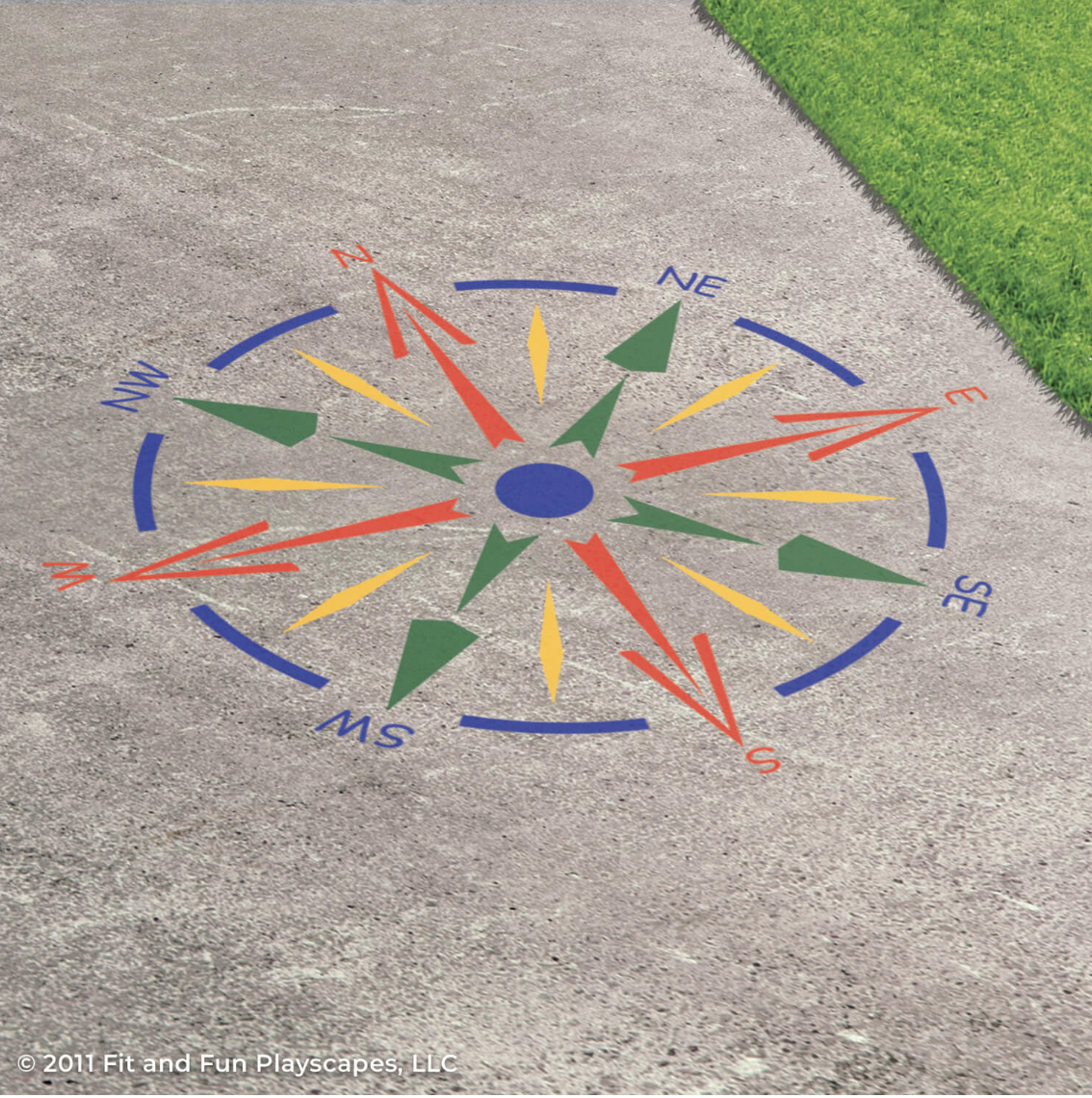
Orientation: Landmarks help children orient themselves within the school building. For example, a large sticker of the school mascot at the center of the school where the hallways connect might help them find “orient” where they are and how they can then find their classroom. This understanding of the spatial layout of the school is crucial for effective navigation.
Memory and Wayfinding: Landmarks that are strong visually serve as memory cues. Children remember the sequence of landmarks along their route especially if they skip, hop, jump etc. to navigate through or to a familiar area of the school. For instance, they might remember passing the water fountain, the bulletin board with colorful artwork, and the display case with trophies on their way to the classroom.
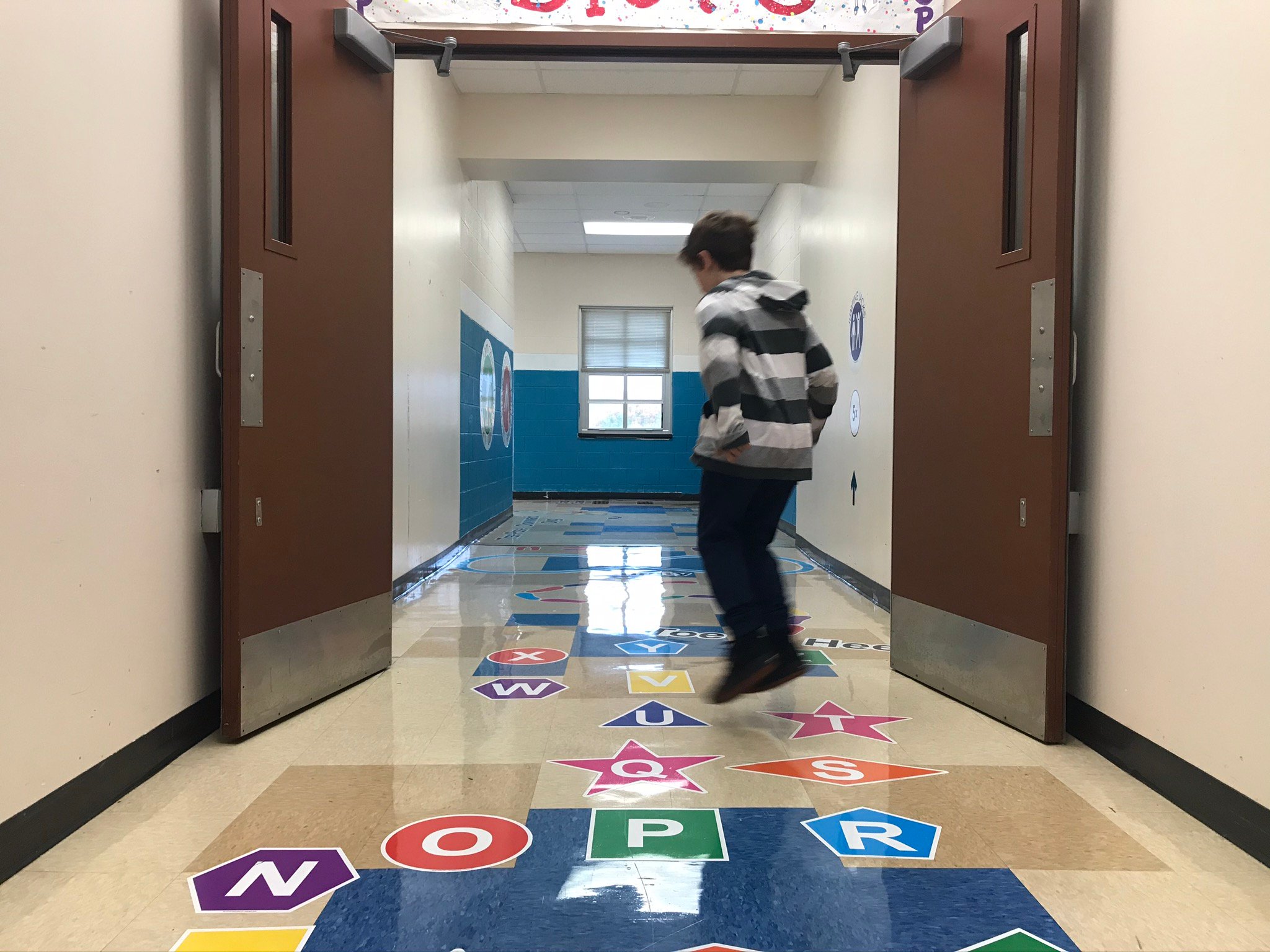
Communication: Landmarks also aid in communication among students. Children might use landmarks as reference points when giving directions to a friend or explaining how to find a particular location within the school. For instance, they might say, "Turn left at the big hopscotch flower and go down the hallway." In addition, young children often self-talk and describe their environment as they go recognizing key features they know to help ease anxiety.
Safety and Emergency Procedures: In emergency situations, such as fire drills or evacuations, landmarks play a critical role in helping children safely exit the building. Teachers and staff often use familiar landmarks as assembly points to ensure everyone is accounted for. Share these critical visual cues often so children know just what to do in a fire drill, or a real emergency.
Personalization: Children may create their own personal landmarks, which are specific to their experiences. For example, they might remember a particular poster or artwork on a classroom door as a landmark that helps them find their way. An area in the hallway or on the playground can also be used as a personal connection that they use to move or a chalk pathway they created on the playground.
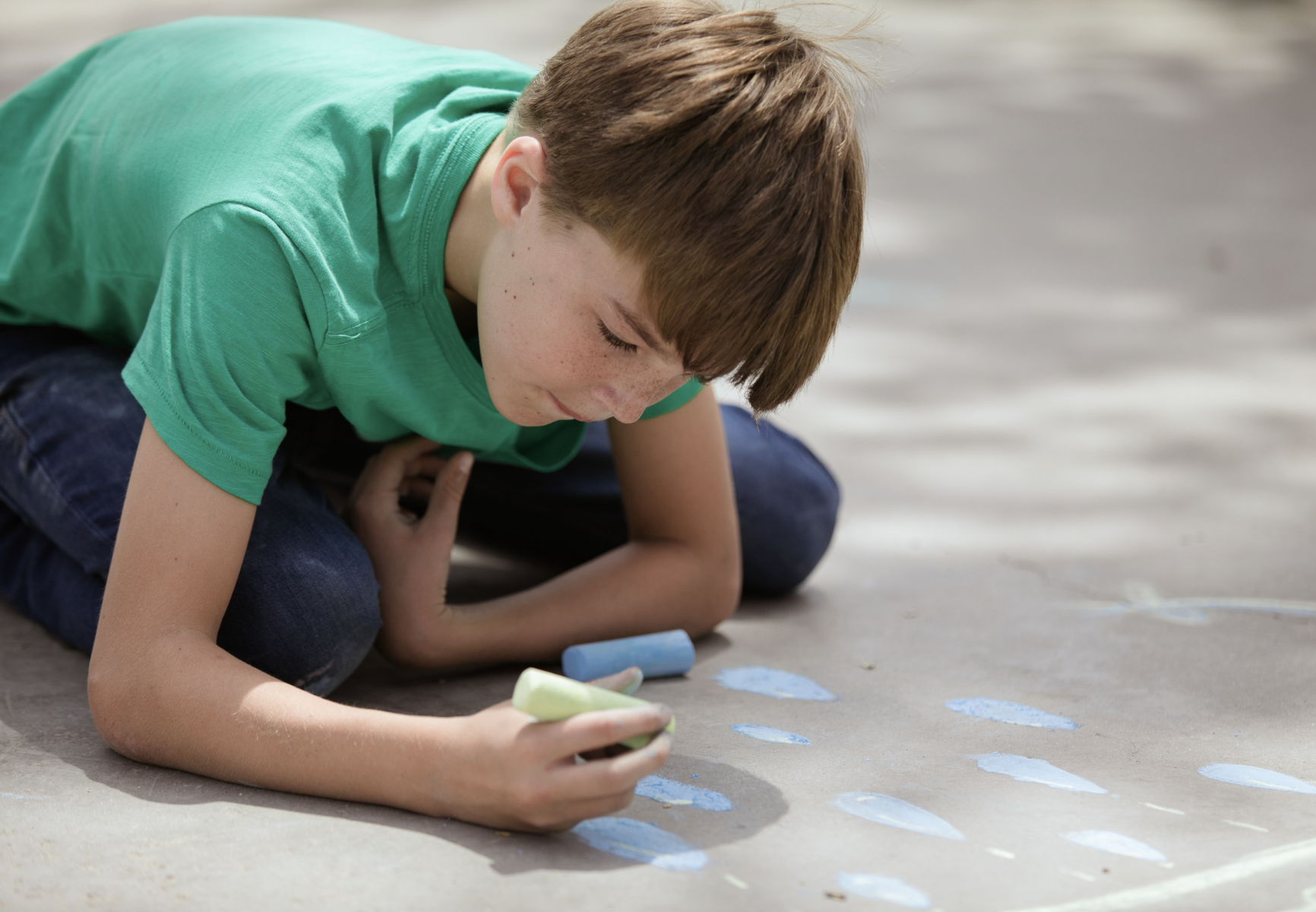
Transitions: As children move from grade to grade or change classrooms, they adapt to new landmarks and develop a mental map of the school that includes these changes. It's a continual learning process. A local preschool uses penguin shaped stickers as a path to the door of the “Penguin” room. Another uses dinosaur feet which leads to the Dino-Room! Kids love the stickers and are able to connect these shapes to where they are supposed to be even leading their parents to the room with great confidence!
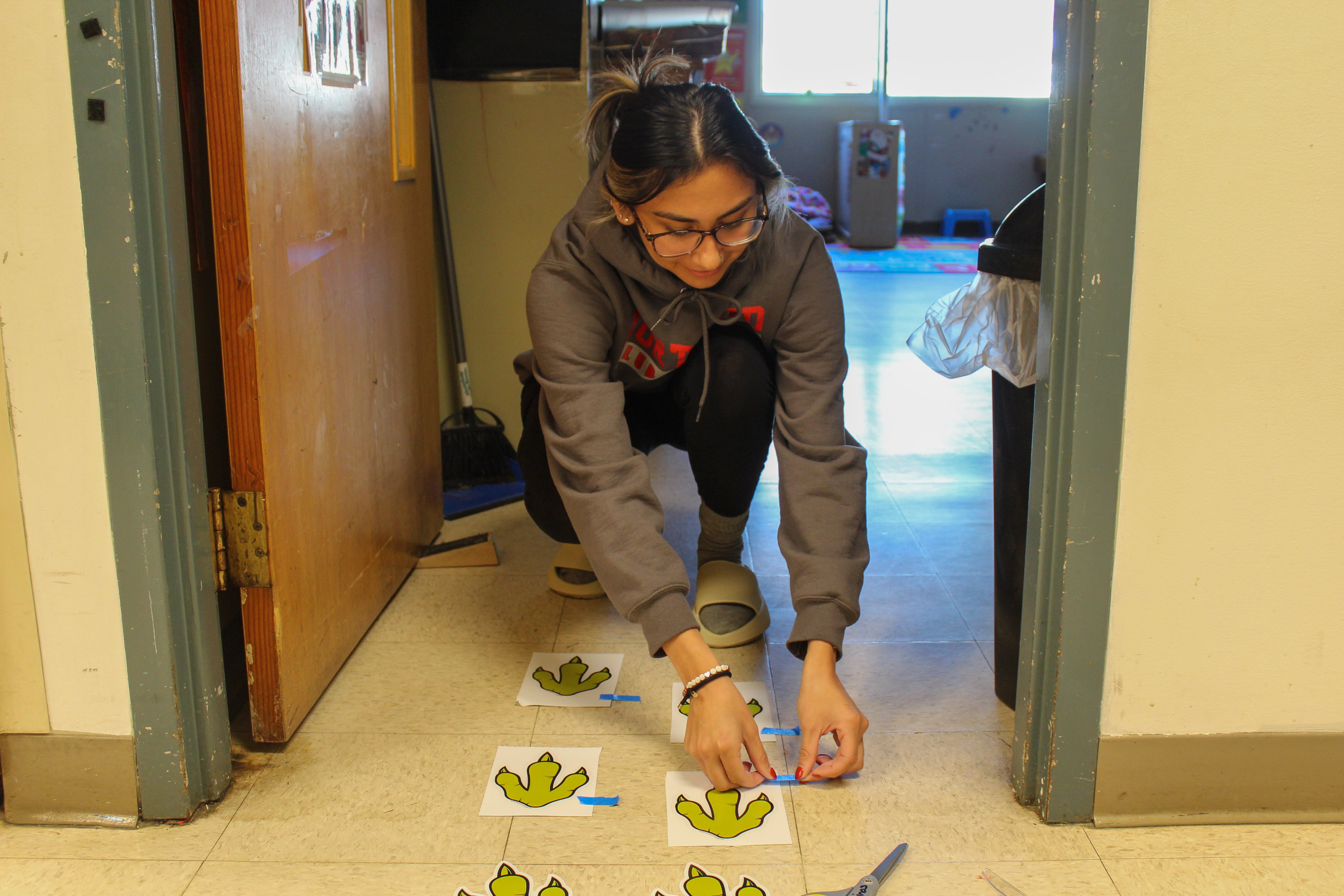
Visual and Sensory Clues: Landmarks can be visual, such as posters or distinctive signs, but they can also involve sensory cues. For instance, they might recognize the infinity loop or wrap around snake as they near the cafeteria. They may also know which bus they are supposed to go to if the right visual cue is placed on the sidewalk (logs for jumping or hopping). A school in PA that operates completely for children with severe special education needs uses color spots to line up. The colors then act as they guide to their next station (blue to blue/green goes to green). These visuals help with student behavior management during a busy bus schedule day.
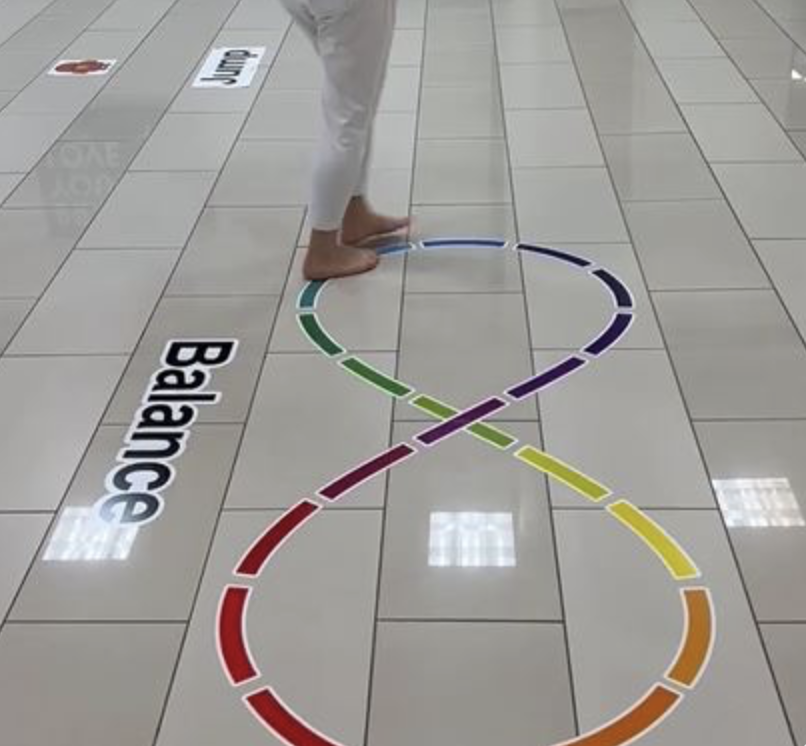
Overall, landmarks and fun visual cues in the environment are an essential part of how children navigate school buildings and become increasingly proficient as they gain familiarity with their surroundings. These reference points aid children to develop spatial awareness and a sense of direction within their school environment.



Leave a comment